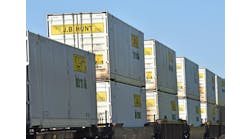Despite issuing a report that it expects to achieve better-than-expected revenues for the quarter, package delivery company UPS has announced it will lay off 1,800 employees.
The company expects to exceed its previously announced estimate for 4th quarter 2009 earnings, now anticipating a range of $0.73 to $0.75 per diluted share. The company previously projected earnings of $0.58 to $0.65 per diluted share for this period.
“The stronger earnings stem from better-than-expected results in both domestic and international operations and savings through cost management,” says Kurt Kuehn, UPS’s chief financial officer. “However, we still anticipate a gradual economic recovery with improvement more evident as 2010 progresses.”
UPS also announced it is streamlining its domestic management structure. By leveraging technology and the management strengths of its people, UPS will reduce the number of districts and regions in its U.S. small package operation.
Effective in April, UPS will reduce its U.S. regions from five to three and its U.S. districts from 46 to 20. As part of the realignment, UPS will expand its outreach to customers by strengthening local sales and marketing efforts.
The restructuring will eliminate approximately 1,800 management and administrative positions across the country. Normal attrition will minimize some job displacements, and approximately 1,100 employees will be offered a voluntary separation package. In addition, other impacted employees will receive severance benefits and access to support programs based on length of service. There are no plans to close any operating facilities.
“The decision to reduce our workforce is difficult and we appreciate the significant contributions of those who will be affected by this change," says Scott Davis, chairman and CEO of UPS. “But we believe this will allow us to sharpen our focus on profitable growth while being even more nimble in serving our customers.”
As a result of the restructuring, UPS expects to incur a one-time charge in 2010 that will be offset by cost savings in the U.S. small package business.


